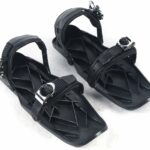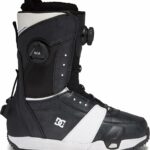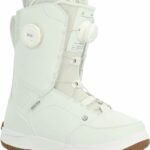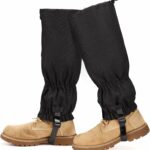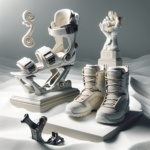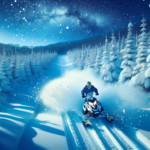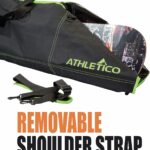You’ve been hitting the slopes, taking on runs with gusto, pushing your snowboarding skills to new heights. There’s just one problem: every time you finish a session, your feet are throbbing in pain, barking like you’ve just run a marathon barefooted. “Why Do My Feet Hurt When Snowboarding?” is an article that seeks to unravel the potential causes of this discomfort, analyzing different factors such as boot fit, bindings, and technique, providing insightful solutions to keep that unwanted pain at bay.
Understanding Foot Pain While Snowboarding
Snowboarding is a thrilling winter sport embraced by outdoor enthusiasts all over the world. However, foot pain is a common issue for many snowboarders – both novice and experienced. It’s easy to neglect this problem and endure the pain, but understanding it can significantly improve your snowboarding experience.
Defining foot pain in context of snowboarding
Foot pain from snowboarding generally seems to occur in the arch or the ball of the foot while you’re on the slopes. It can manifest in several ways – it might be a simple discomfort, a dull ache, or even a sharp, debilitating pain, depending on several factors like your boots, your stance on the snowboard, or even pre-existing conditions.
Potential immediate and long-term effects of foot pain
Ignoring your foot pain doesn’t just ruin your day on the slopes but can also lead to more serious complications. In the short term, it could force you off the slopes due to the discomfort or ruin your control over your board. Over the long term, this could lead to chronic foot conditions or even physiological changes to your foot’s structure.
Anatomy of a Snowboarder’s Foot
Before delving deeper, let’s take a brief look at the snowboarder’s foot’s anatomy and understand how the sport affects it.
Structural components of the foot
Your feet are complex structures, consisting of numerous bones, joints, muscles, ligaments, and tendons. The foot’s main sections include the arch, the forefoot (containing your toes and the ball of your foot), and the hindfoot (ankle and heel). Snowboarding places significant stress on all of these areas but typically impacts the arch and forefoot most.
How these structures are impacted by snowboarding
Snowboarding demands a lot from your feet – they control your direction, balance, and speed on the slopes. The repeated flexing of your foot, the pressure from sharp turns, and the force from hard landings can strain the foot’s structures, leading to discomfort and pain.
Snowboard Boots and Foot Pain
Your snowboard boots are your primary connection to your board, making them incredibly important in your snowboarding experience.
Importance of properly fitting boots
Just like any other footwear, snowboard boots must fit well. Boots that are too tight can constrict your circulation and cause pain, while boots too loose can let your foot slide, creating friction and increasing the risk of injuries.
Factors to consider when purchasing snowboarding boots
When choosing your snowboard boots, consider factors like your foot’s size and shape, your skill level, and the boot’s flex. Be sure they fit snugly around your whole foot, have excellent heel hold, and are comfortable to move and flex in.
How snowboarding boots can cause pain
Ill-fitted boots, worn-out boots, or improperly adjusted bindings can all cause foot pain. Tight boots can squeeze your foot and cut off circulation, causing numbness and cold feet. Loose boots lead to excessive movement that can trigger friction and cause injury.
Incorrect Snowboarding Technique
Understanding proper snowboarding form is integral to avoiding foot pain or other injuries on the slopes.
Proper snowboarding form
Good snowboarding form involves a relaxed stance, with your knees bent and your weight centered over your board. Your feet should perform precise, controlled movements to guide your snowboard, avoiding any unnecessary strain.
Common mistakes in snowboarding technique
Some common technique errors include leaning too far back, stiffening your legs, or applying uneven weight on your feet. These mistakes force your feet to compensate, leading to overuse or injury.
Correlation between poor technique and foot pain
Poor technique often leads to excessive strain on your feet and lower limbs, which can result in discomfort and pain in your feet. It’s also key to note that good technique not only minimizes the risk of foot pain, but also makes you a more efficient and elegant snowboarder.
Pre-existing Foot Conditions
People with pre-existing foot conditions need to take extra precautions when snowboarding.
Common foot conditions that can be aggravated by snowboarding
Conditions like flat feet, high arches, or bunion issues can affect how your foot fits in a snowboard boot and how it handles the strains of snowboarding. These conditions can potentially increase your risk of experiencing foot pain while snowboarding.
Recommendations for snowboarding with foot conditions
If you have a known foot condition, it is wise to consult a podiatrist or a sports medicine specialist. They can recommend specific boot models, custom footbeds, or exercises to help manage your condition while snowboarding.
Novice Snowboarder Mistakes
Like any new skill, learning to snowboard comes with its share of common beginner mistakes.
Common mistakes made by beginners
Beginners often make mistakes such as overusing their toe edge leading to sore toes, fastening their bindings too tight causing numbness, or not taking breaks when needed.
How these mistakes contribute to foot pain
These mistakes lead to overuse, poor circulation, and overall stress on your feet, causing foot discomfort and pain on the slopes.
Tips for novice snowboarders to avoid foot pain
Being mindful of not overdoing it, taking regular rest, keeping hydrated, and practicing proper snowboarding form can help you avoid foot pain as a beginner.
Foot Pain Prevention Tips
Prevention, undoubtedly, is the best way to deal with foot pain from snowboarding.
Proper foot care and maintenance
Regular foot care that includes good hygiene, stretching and strengthening exercises, and wearing the right footwear, even off the slopes can prep your feet for snowboarding.
Strategies for minimizing foot pain when snowboarding
Warming up before snowboarding, maintaining good form, taking regular breaks, and hydrating often can help ensure you are less likely to experience foot pain due to snowboarding.
Snowboarding gear recommendations
Investing in high-quality, properly fitting snowboarding boots, and possibly custom footbeds, could save your feet quite a bit of discomfort on the mountain.
Foot Pain Treatment and Recovery
Foot pain shouldn’t be ignored, while some home remedies exist, serious pain should always be diagnosed and treated by professionals.
First aid for immediate care
In case of immediate pain, apply the RICE method – Rest, Ice, Compression, and Elevation. Get off your board, cool the area with ice, wrap it lightly, and elevate the foot.
Long-term treatment strategies for foot pain
Determining the underlying cause is important for an effective treatment strategy. This may involve physiotherapy, pain medication, boot adjustments, orthotic inserts, or even surgery in severe cases.
Recovery and rehabilitation from foot injuries
Recovering from foot injuries needs patience, appropriate rehabilitation exercises, and adequate rest. You should also address any underlying issues in your snowboarding equipment or technique that may have contributed to the injury.
When to Seek Medical Attention
While it’s common to experience some foot discomfort from snowboarding, persistent or severe pain should not be dismissed.
Warning signs of severe foot pain
Sharp, unbearable pain, swellings or deformities, inability to walk without pain, symptoms that persist or worsen over time, or symptoms that interfere with your daily activities are all red flags pointing towards a need for professional medical help.
Potential consequences of untreated foot injuries
Ignoring foot pain can lead to long term complications like chronic foot pain, disability or deformities, and a diminished quality of life. In worse case scenarios, untreated foot injuries could even lead to amputation.
Advice on when to consult a healthcare provider
It’s better to be safe than sorry. If you have severe foot pain or signs of injury after snowboarding, see a healthcare provider as soon as possible. They can diagnose the problem and get you on the right treatment plan quickly.
Improving Snowboarding Ergonomics
Ergonomics is all about efficiency, and this applies to snowboarding too. Paying attention to your snowboarding ergonomics can prevent foot pain and improve your overall performance.
Understanding snowboarding ergonomics
Snowboarding ergonomics involves making sure that every aspect of your gear and technique works together to minimize strain and maximize effectiveness.
Techniques for improving snowboarding posture and form
Stand up straight, bend your knees, keep your arms relaxed, and distribute your weight evenly. Practicing these good postures, alongside with proper foot movements, can greatly improve your snowboarding ergonomics.
Ergonomic modifications to snowboarding equipment
Adjusting the bindings in line with your stance, ensuring your boots fit well and are comfortable, and using footbeds or inserts in case of foot conditions, can all help improve the ergonomics of your snowboarding act and help you enjoy the slopes pain-free.
- What Snowboard Bindings Should I Get? - January 23, 2024
- What Size Screws For Snowboard Bindings? - January 23, 2024
- How To Snowmobile On Water? - January 23, 2024



